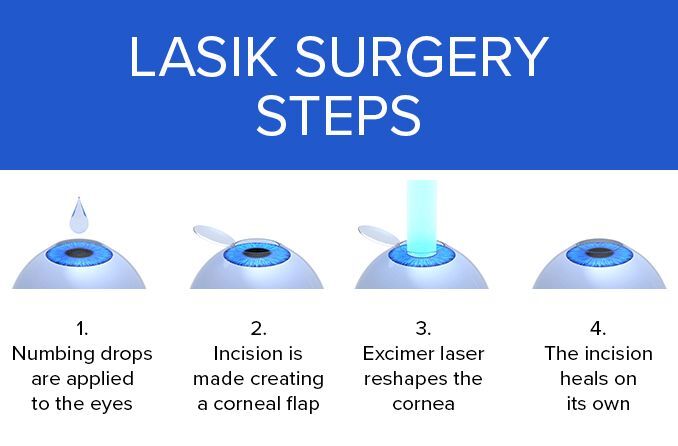Advancements In LASIK Technology: What You Need To Know
LASIK (Laser-Assisted In Situ Keratomileusis) surgery has revolutionized vision correction, offering millions worldwide freedom from glasses and contact lenses. Over the years, significant advancements in LASIK technology have enhanced safety, precision, and outcomes. This article delves into the latest innovations in LASIK technology, shedding light on what patients need to know before undergoing this procedure.
Evolution of LASIK Technology
Since its inception in the 1990s, LASIK technology has undergone remarkable evolution. Initially, LASIK involved creating a flap in the cornea using a microkeratome blade, followed by reshaping the cornea with an excimer laser. This method, although effective, had limitations in precision and predictability.
The introduction of femtosecond lasers marked a significant advancement in LASIK technology. Femtosecond lasers replaced the microkeratome blade, allowing for more precise flap creation with customizable parameters. This reduced the risk of complications and improved visual outcomes.
Wavefront-guided LASIK is another milestone in LASIK technology. This technique utilizes wavefront analysis to map the unique imperfections in an individual’s optical system, enabling customized laser treatment tailored to each patient’s eye. Wavefront-guided LASIK has shown superior results in visual acuity and reduced risk of side effects such as glare and halos.
Further refinements led to the development of topography-guided LASIK. This advanced technology incorporates corneal topography data to address irregular astigmatism and higher-order aberrations, offering enhanced visual quality and better outcomes, particularly in patients with corneal irregularities.
Latest Innovations in LASIK Technology
The field of LASIK continues to evolve with ongoing research and technological advancements. Several recent innovations have further improved the safety, accuracy, and customization of LASIK procedures.
- SMILE (Small Incision Lenticule Extraction):
SMILE is a minimally invasive refractive surgery that differs from traditional LASIK in its approach to corneal reshaping. Instead of creating a flap, SMILE involves creating a small incision through which a lenticular of corneal tissue is removed using a femtosecond laser. This preserves the corneal structure and may reduce the risk of dry eye syndrome compared to LASIK. SMILE has gained popularity for its efficacy, safety, and rapid visual recovery. - Customized Treatments with Artificial Intelligence:
Artificial intelligence (AI) is revolutionizing various fields of medicine, including ophthalmology. AI algorithms analyze vast amounts of patient data to identify patterns and optimize treatment strategies. In LASIK surgery, AI-based platforms can assist surgeons in planning and executing customized treatments, improving accuracy and outcomes. These systems enable precise adjustments based on individual eye characteristics, leading to better visual outcomes and patient satisfaction. - Advanced Eye Tracking Systems:
Eye tracking technology plays a crucial role in ensuring precise delivery of laser energy during LASIK surgery. Recent advancements in eye-tracking systems have enhanced their speed and accuracy, minimizing the impact of eye movements on treatment outcomes. These advanced systems can track eye movements in real-time with sub-millisecond latency, enabling precise laser delivery even in dynamic environments. Improved eye tracking enhances safety and efficacy, particularly in patients with higher levels of refractive error. - Ultrafast Laser Platforms:
Ultrafast lasers, such as femtosecond lasers, have revolutionized corneal surgery by enabling precise and controlled tissue manipulation with minimal collateral damage. These lasers operate at femtosecond timescales, allowing for extremely precise cuts and modifications in corneal tissue. Ultrafast laser platforms have expanded the scope of refractive surgery beyond traditional LASIK, facilitating procedures such as corneal transplants, corneal reshaping for irregular astigmatism, and treatment of corneal ectatic disorders.
Considerations for Patients
While advancements in LASIK technology have significantly improved safety and outcomes, it’s essential for patients to consider various factors before undergoing the procedure.
- Consultation with a Qualified Ophthalmologist:
Before undergoing LASIK surgery, patients should schedule a comprehensive eye examination with a qualified ophthalmologist. The ophthalmologist will assess the patient’s candidacy for LASIK based on factors such as refractive error, corneal health, and overall eye health. During the consultation, patients should discuss their expectations, potential risks, and available treatment options. - Understanding Treatment Options:
There are other options for correcting vision besides LASIK. Depending on individual preferences and eye characteristics, alternative procedures such as PRK (Photorefractive Keratectomy), SMILE, or implantable lenses may be more suitable. Patients should weigh the benefits and risks of each option and make an informed decision in consultation with their ophthalmologist. - Realistic Expectations:
While LASIK technology has advanced significantly, it’s important for patients to have realistic expectations regarding the outcomes of the procedure. While most patients achieve significant improvements in vision, some may still require glasses for certain activities or experience minor visual disturbances such as glare or halos, especially in low-light conditions. Open communication with the surgeon can help manage expectations and ensure satisfaction with the results. - Postoperative Care and Follow-up:
Following LASIK surgery, patients will require postoperative care and regular follow-up visits to monitor their recovery and visual outcomes. Compliance with postoperative instructions, including the use of prescribed medications and avoidance of activities that may compromise healing, is crucial for a successful outcome. Any concerns or unusual symptoms should be promptly reported to the surgeon for evaluation and management.
Conclusion
Advancements in LASIK technology have transformed the field of refractive surgery, offering patients improved safety, precision, and customization. From femtosecond lasers to AI-guided treatments, the latest innovations continue to push the boundaries of what’s possible in vision correction. However, while LASIK offers many benefits, it’s essential for patients to undergo a thorough evaluation and make informed decisions in collaboration with their ophthalmologist. By understanding the latest advancements and considering individual needs and expectations, patients can achieve optimal outcomes and enjoy the freedom of clear vision without glasses or contact lenses.
For any further queries, Plz visit drvivekgarg.in








